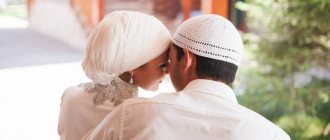Family relationships are a very interesting topic, which becomes especially relevant after the wedding ceremony. Who the bride and groom relate to whom after the wedding is an exciting and serious question, especially for newly-made relatives. In the old days, knowing your ancestors and all relatives, blood and non-blood, was considered an honorable and important stage in the beginning of a life together.
In the modern world, young people often do not know the correct names of certain relatives and who is related to whom after the wedding. If a child appears in a family, it is not difficult for him to understand who mom, dad, grandparents, sister or brother are. But with other family relationships, if not confusion arises, then simply elementary ignorance.
How did the relationship arise?
About two hundred years ago, blood relatives traditionally lived together: in the same estate, courtyard or large house. It was also customary, if a son was born in a family, to build him a house next to his parents’, where he could bring his wife after the wedding. It happened that one street in the village consisted only of relatives’ houses. Then the concept of kinship was something common, and everyone knew who was related to whom in the family after the wedding.
In the old days, family relationships, even distant ones, were considered very strong, and mutual assistance and support were not considered a favor. Preserving the family in order to survive and continue it is the main goal of all close people of past centuries, connected in one way or another.
Modern society is far from the old ideas about family. Unfortunately, now even parents and children living close to each other see each other very rarely, not to mention distant relatives. Blood ties are not supported by foundations, free material assistance, or a common family structure, so family relationships, especially distant ones, are under threat and are gradually dying out.
For example…
- Stry is the brother of his own father (note: his paternal aunt’s name was Stry).
- And uy (or vui) is mom’s brother.
- The sister's son was called sister , and the brother's daughter was called son .
- My maternal cousin was a Uychich .
Issues of blood, as we know, are one of the most complex issues in the world. But if you wish, you can understand them too.
However, it doesn’t matter who they call them or what they call them, as long as there is peace in the family!
The site Colady.ru thanks you for your attention to the article! We will be very pleased if you share your feedback and tips in the comments below.
Relationship by blood
Even if there is no tradition in a young family of knowing all of their relatives, there is still an interest in who is related to whom after the wedding. Family ties, whether strong or not, have a certain degree of importance, especially if they are blood.
The first degree of kinship refers to children and parents, blood sisters and brothers who have a common father and mother. Half-siblings are those who have the same father and different mothers, while half-siblings, on the contrary, have the same mother and different fathers.
The second related degree belongs to grandparents and grandchildren. This level of family relationships is as important as the first, because external similarities, diseases, and other physical and psychological characteristics are passed on from grandparents to the same extent as from parents.
The third degree of relationship is already with the prefix -great: great-grandparents. For grandchildren, these are the parents of their grandparents. This category also includes uncles, aunts, nephews, that is, brothers and sisters of parents.
Results
All the information provided about how to call new relatives after the wedding is more for informational purposes than practical. In real life, it is unlikely that you will have to address anyone using a name based on the degree of relationship, but knowing this information, you can show off your intellect in a family circle or in the company of friends. The most important thing is that the newlyweds have a prosperous and happy married life, and that relatives, regardless of their fancy names, help and support them in difficult times.
(Was it useful? Please rate)
Groom's relatives
After legal marriage, information about who is related to whom after the wedding acquires special significance. Relatives on the groom's side for the bride will be designated as follows: father - father-in-law, mother - mother-in-law, brother - brother-in-law, sister - sister-in-law, husband's brother's wife - daughter-in-law, and his sister's husband - son-in-law. The parents of the bride and groom call each other matchmakers after the wedding.
Brothers and sisters of young people with their spouses
The husband's brother and sister are called brother-in-law and sister-in-law, respectively, while the wife's brother and sister are called brother-in-law and sister-in-law. Speakers of the Eastern European dialect also call the brothers on both sides Schwagers.
As for the brothers' wives, their names and who they are to each other, the Russian language did not skimp on names. There are more of them than for any other relatives - jatras, consorts, and in some regions, like the husband's sister, they are called sister-in-law. Accordingly, brothers' wives are also called in relation to each other.
But the name of the sisters’ husbands is not original; they are all called brothers-in-law among themselves, although the husband’s sister’s husband is separately called son-in-law. To make it clearer what names the acquired relatives have, we suggest taking a look at the diagram, which shows who is related to whom:
Distant blood relatives
Nowadays, interest in who is related to whom after the wedding has gradually begun to fade away. With the birth of a new family, which will slowly acquire children of its own, distant relatives will not have much importance given the way of modern life. In order to pay tribute to traditions, you need to have a lot of free time, which is limited in the twenty-first century.
If you are interested in finding out who is related to whom after the wedding, you can draw up a family tree, taking into account that its lateral branches also belong to the category of blood relatives. Usually, at the beginning of the family, common ancestors are indicated, which are distant relatives. It is from them that the countdown begins.
The fourth degree of consanguinity represents cousins, grandparents, and great-nephews (grandchildren of siblings).
The fifth degree of relationship is cousins, aunts and uncles, and nephews.
The sixth, most distant, are second cousins, that is, children of cousins of parents.
The remaining degrees of consanguinity are considered very distant and are not tracked by many.
Father of the bride at the wedding
For any father, the marriage of his beloved daughter is a whole test. In addition to the inevitable financial investments, parents at their daughter’s wedding worry about her future and worry about relationships in the new family. But, at the same time, they feel legitimate pride in the beautiful bride. Traditionally, the role of the father on this solemn day is very responsible; he performs several important responsibilities:
- leads the happy bride to the altar, handing over her hand to her husband. This custom came to Russia from the West and quickly gained popularity. It symbolizes the transfer of responsibility for the health, safety and life of the girl to her new husband. From this moment on, the responsibility to protect his family falls on the shoulders of the groom. Of course, in the modern world the original meaning is no longer relevant. But the ceremony itself, when the bride solemnly walks to the altar with her proud father along a path strewn with flowers, looks incredibly romantic and touching;
- Dad opens the dance tour with the bride at the wedding. This first dance symbolizes the family's farewell to their daughter. Exciting, full of tenderness and love, it is especially touching. After the end of the dance, the father passes his daughter’s hand to the groom, which, according to ancient custom, completes the rite of passage of the child into a new family life.
These are the main responsibilities of a father at his daughter's wedding. But, of course, they can be supplemented and changed at will. After all, on this day the main thing is for everyone to feel happy and carefree. You can arrange funny competitions with parents in the lead role, or come up with an original scene with a formidable dad who tests the groom before handing him his favorite.
Relatives not by blood
Very useful and interesting information about who is related to whom after the wedding, if the relationship is not blood. You can read about the close relatives of the bride and groom above, but there are many others who are related by non-blood ties. So, if the groom has a child from another marriage, then for the future wife he will be a stepson or stepdaughter. A wife is considered a stepmother for her husband’s natural son or daughter, and a stepfather is considered a stepfather. The godmother and father (who baptized the child of friends) are godmothers among themselves.
Receiving a Blessing
When the groom talks about his feelings and serious intentions to the bride's parents, they agree. This moment is a blessing. Symbolically, the father takes his daughter’s hand and places it in the guy’s palm. The mother seals her blessing with hugs and kisses.
Similarly, they receive approval for marriage from the groom’s father and mother. But here the girl does not talk about her feelings and intentions to get married, it happens differently. The guy introduces the bride, talks about his decision to start a family, and then they give their blessing.
Depth of kind
The clan and its duration depend on the number of generations of children who are related by blood. They are the ones who determine the scale of the family tree. Usually the branches and crown depicted schematically are families of children. Due to the difficulty of tracking weddings, deaths and other events that influenced their family, special chronicles were kept in ancient aristocratic families.
Nowadays, tracking a family lineage deeper than the fourth generation is considered difficult; in this situation, it is especially difficult to understand who is related to whom after the wedding. The relatives of young people (non-blood) often do not have significant significance if there is no close spiritual or friendly connection between these people.
A child born into a family of nephews is called a niece (nephew grandson or granddaughter, great-grandson or great-granddaughter and further down the depth of birth). The grandson of a brother or sister makes a grandparent out of an aunt and uncle, and such children are called great-nephews.
For the rest of the family: who is related to whom?
For all other members of both families, the names of relatives sound like this (here we included the godparents of the couple’s child, since spouses often plan to add children soon after the wedding).
Godparents do not necessarily have to have blood ties with their godson; on the contrary, they are often family friends. But they should be selected with special care, because the sacrament of baptism, like a wedding in a church, is an important event in the life of every person!
Cousin and its depth
If the bride and groom have cousins, they are also called cousins, then for young children they will also be cousins, but now aunts and uncles. These categories are considered consanguineous, but distant. Knowing your family tree and tracing all branches two or three hundred years ago was considered the privilege of aristocrats and was confirmation of a high position in society. The same applied to simply rich people, landowners and merchants.
In some European countries, the tradition is still preserved to honor their ancestors and draw up a family tree, which is usually traced from father to son. That is why in royal and wealthy families the birth of an heir was of paramount importance for the family.
It is no secret that modern society is far from ideal relationships between relatives, even blood ones. Conflicts based on family troubles, gossip, material and housing problems are increasingly leading to real wars, where there is no place for love and respect for the family. And even the fact of creating a new family, for which it is so important to know who is who after the wedding, the relatives of the groom (or, conversely, the bride) cannot always accept for many reasons.
Final tips
In conclusion of the article, I would like to give two pieces of advice regarding the names of relatives after marriage:
- When preparing for the celebration and compiling the list of invitees, as well as the seating arrangement of guests at the wedding, write in parentheses who this person will be. Each time you edit the list and look at these names, you will easily remember them.
- The question often arises of how to call relatives: by name or by their relative “status”? It all depends on people's preferences! If earlier it was customary to use the names of relatives in speech, now more and more often they are addressed by their first name and patronymic. The exception is godfathers and matchmakers, who often jokingly like to address each other this way.
Sources:
https://www.stranamam.ru/post/99223/ https://sunmag.me/svadby/kto-komu-i-kem-prihoditsya-posle-svadby.html https://mywed.by/article/nazvaniya -rodstvennikov/
Nephews
They fall into the category of close blood relationships, and sometimes can even replace children for aunts and children who do not have their own. Nephews are the offspring of half-siblings. They are also first cousins to their aunt and uncle's children.
Unfortunately, it happens that cousins or nephews marry each other. This leads to various genetic pathologies and degeneration. In this case, it is best to know who is related to whom after the wedding. The relatives of the bride and groom establish family relationships that cannot be turned into marriages of people by blood. Meanwhile, in many European and other countries, such marriages are not officially welcomed, but are not prosecuted by law either.
Grand-relatives
This relationship is more in-depth, and it affects brothers and sisters of different branches of the family tree. For example, when the children of sisters or brothers grow up and start their own families, they start a new branch. Therefore, the more children there are in such marriages, the more magnificent and branchy the crown looks. However, the level of relatedness in all families is determined only by the depth of the roots.
It is possible to decipher the meaning and meaning of the names of all relatives and relatives by blood only by studying the family life of a particular person. In order to understand who a great-nephew is, trace the family relationships of a woman who has a blood brother or sister. For example, her children will be considered nephews for half-blood relatives. Over time, growing up, nephews get married or get married, have their own children, who will already be called grandchildren. In the future, the depth of the clan is determined precisely by nephews, great-grandchildren, and further with the prefix -great-great.
In addition to the well-known names of close relatives and in-laws, there is a huge variety of secondary and tertiary relatives, which can be called habitually or even go beyond the scope of family relations. Modern families increasingly prefer, or this happens for objective reasons, not to track the depth of kinship, and family inheritance is passed on regardless of gender and number of children.











